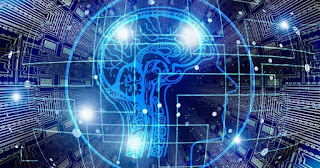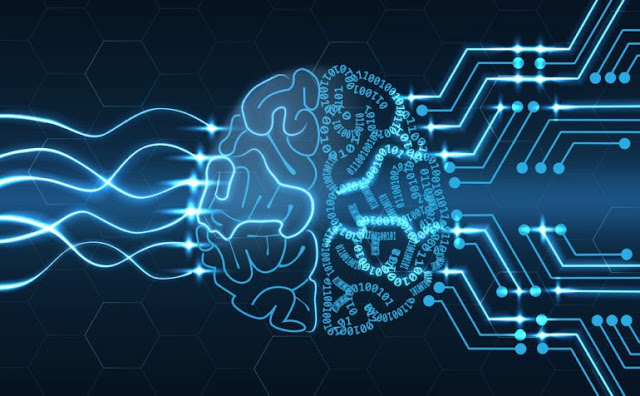Technology Trends for 2020

Technology is
now evolving at such a rapid pace that annual trend forecasts may seem out of
date before they are even posted as a blog post or published article. As
technology advances, it allows for even faster change and progress, causing the
rate of change to accelerate until it eventually becomes exponential.
Technology-based
careers don't change at the same rate, but they do evolve, and the savvy IT
professional recognizes that their role will not remain the same. And a 21st
century computer scientist will learn constantly (by necessity, if not by
desire).
What does
this mean for you? It means staying up to date with technological trends. And
that means keeping an eye on the future, knowing what skills you need to know
and what types of jobs you want to qualify. Here are eight technological trends
to watch in 2020, and some of the jobs that will be created by these trends.
Artificial Intelligence (AI)
Artificial
intelligence, or AI, has already received a lot of buzz in recent years, but it
continues to be a trend to watch because its effects on the way we live, work
and play are only in the early stages. In addition, other branches of AI have
developed, including Machine Learning, which we will discuss below. AI refers
to computer systems designed to mimic human intelligence and perform tasks such
as image, speech or pattern recognition and decision making. AI can perform
these tasks faster and more precisely than humans.

Five in six Americans use AI services in one form or another every day, including navigation apps, streaming services, smartphone PDAs, trip sharing apps, PDAs and smart home appliances. In addition to consumer use, AI is used to plan trains, assess business risks, plan maintenance and improve energy efficiency, among other economic tasks.
AI is part of
what we usually call automation, and automation is a hot topic because of the
potential loss of jobs. Experts say automation will cut 73 million more jobs by
2030. However, automation creates and cuts jobs, especially in the AI field:
Experts predict that AI jobs will be 23 million by 2020. Jobs will be created
in development, programming, testing, support and maintenance, to name a few.
One of these jobs is the architect of artificial intelligence. Some say it will
soon compete with data scientists who need skilled professionals. To learn more
about potential AI jobs, read how to build an AI career or why you should get
an AI certification.
Tiny Artificial Intelligence (AI)
AI has a
problem: in the quest to build more powerful algorithms, researchers are using
more and more data and computing power and are relying on centralized cloud
services. This not only generates alarming amounts of carbon emissions, but
also limits the speed and privacy of AI applications.
 But a tiny AI
counter-trend is changing that. Technology giants and university researchers
are working on new algorithms to reduce existing deep learning models without
losing their capabilities. Meanwhile, a new generation of specialized AI chips
promises to integrate more computing power into narrower physical spaces, and
to train and execute AI with far less power.
But a tiny AI
counter-trend is changing that. Technology giants and university researchers
are working on new algorithms to reduce existing deep learning models without
losing their capabilities. Meanwhile, a new generation of specialized AI chips
promises to integrate more computing power into narrower physical spaces, and
to train and execute AI with far less power.
These advances
are just beginning to be accessible to consumers. Last May, Google announced
that it can now run Google Assistant on users' phones without sending requests
to a remote server. Since iOS 13, Apple has been running the voice recognition
capabilities of Siri and its QuickType keyboard locally on the iPhone. IBM and
Amazon now also offer development platforms for creating and deploying small
AIs.
All of this
could bring many benefits. Existing services such as voice assistants,
auto-correction, and digital cameras will improve and faster without having to
ping the cloud every time they need to access a deep learning model. Tiny AI
will also allow new applications, such as the analysis of medical images on
mobile or autonomous cars with faster reaction times. Finally, localized AI is
better for privacy, because your data no longer needs to leave your device to
improve a service or functionality.
But as the
benefits of AI spread, so will all of its challenges. It could become more
difficult to fight surveillance systems or deepfake videos, for example, and
discriminatory algorithms could also proliferate. Researchers, engineers and
policy makers must work together now to develop technical and political
controls on this potential damage.
Machine Learning

Machine
learning is a subset of AI. With Machine Learning, computers are programmed to
learn to do something that they are not programmed to do: they learn by
discovering patterns and ideas from data. In general, we have two types of
learning, supervised and unsupervised.
Although
Machine Learning is a subset of AI, we also have subsets in the area of
Machine Learning, including neural networks, natural language processing
(NLP) and deep learning. Each of these subsets offers the opportunity to
specialize in a career area that will only grow.
Machine
learning is rapidly deploying in all kinds of industries, creating a huge
demand for qualified professionals. The Machine Learning market is expected to
reach $ 8.81 billion by 2022. Machine Learning applications are used for data
analysis, data mining and pattern recognition. On the consumer side, Machine
Learning optimizes web search results, real-time advertising and network
intrusion detection, to name a few of the many tasks it can perform.
In addition
to performing countless tasks on our behalf, it generates jobs. Machine
learning jobs are among the top emerging jobs on LinkedIn, with nearly 2,000
job openings posted. And these jobs pay well: in 2017, the median salary for a
machine learning engineer was $ 106,225. Machine learning jobs include
engineers, developers, researchers and data scientists.
Robotic Process Automation or RPA
 Like AI and
machine learning, robotics process automation, or RPA, is another technology
that automates work. RPA is the use of software to automate business processes
such as application interpretation, transaction processing, data processing and
even email response. RPA automates the repetitive tasks that people used to do.
It's not just the subordinate tasks of a low-paid worker: up to 45% of the
activities we do can be automated, including the work of CFOs, doctors and
CEOs.
Like AI and
machine learning, robotics process automation, or RPA, is another technology
that automates work. RPA is the use of software to automate business processes
such as application interpretation, transaction processing, data processing and
even email response. RPA automates the repetitive tasks that people used to do.
It's not just the subordinate tasks of a low-paid worker: up to 45% of the
activities we do can be automated, including the work of CFOs, doctors and
CEOs.
Although
Forrester Research estimates that automation of APR will threaten the
livelihoods of 230 million or more knowledge workers, or about 9% of the global
workforce, APR also creates new jobs while modifying existing jobs. McKinsey
finds that less than 5% of professions can be fully automated, but about 60%
can be partially automated.
For you as a
forward-looking IT professional trying to understand technology trends, RPA
offers many career opportunities, including developer, project manager,
business analyst, solution architect and consultant. And these jobs pay well. SimplyHired says the average RPA salary is $ 73,861, but it's
the average compiled from salaries of lower-level developers to senior solution
architects, with the top 10% earning more than $ 141,000 a year. So if you want
to learn and pursue a career in RPA, the Introductory Robotics Process (RPA)
course should be the next step to start a career in RPA.
Edge Computing

Once a
technological trend to watch, cloud computing has become common, with the main
players AWS (Amazon Web Services), Microsoft Azure and Google Cloud dominating
the market. Cloud adoption continues to grow as more and more companies migrate
to a cloud solution. But this is no longer emerging technology.
 As the amount
of data we process continues to grow, we have realized the shortcomings of
cloud computing in certain situations. Edge computing is designed to help solve
some of these problems in order to bypass the latency caused by cloud computing
and route the data to a data center for processing. It can exist "at the
limit", if you like, closer to where the IT must happen. For this reason,
the IT edge can be used to process time-sensitive data in remote locations with
limited or no connectivity at a central location. In these situations, edge
computing can act as mini data centers. Advanced computing will increase as the
use of Internet of Things (IoT) devices increases. By 2022, the global advanced
IT market is expected to reach $ 6.72 billion. As with any growing market, this
will create a variety of jobs, mainly for software engineers.
As the amount
of data we process continues to grow, we have realized the shortcomings of
cloud computing in certain situations. Edge computing is designed to help solve
some of these problems in order to bypass the latency caused by cloud computing
and route the data to a data center for processing. It can exist "at the
limit", if you like, closer to where the IT must happen. For this reason,
the IT edge can be used to process time-sensitive data in remote locations with
limited or no connectivity at a central location. In these situations, edge
computing can act as mini data centers. Advanced computing will increase as the
use of Internet of Things (IoT) devices increases. By 2022, the global advanced
IT market is expected to reach $ 6.72 billion. As with any growing market, this
will create a variety of jobs, mainly for software engineers.Virtual Reality and Augmented Reality
Virtual
reality (VR) immerses the user in an environment while augmented reality (AR)
improves his environment. Although VR has been primarily used for gaming so
far, it has also been used for training, as with VirtualShip, simulation
software used to train ship captains of the U.S. Navy, the Army and of the
coast guard. The popular Pokemon Go is an example of AR.
 VR and AR
have enormous potential in training, entertainment, education, marketing and
even post-injury rehabilitation. Either could be used to train doctors in
surgery, give museum visitors a more in-depth experience, improve theme parks,
or even improve marketing, as with this Pepsi Max bus shelter.
VR and AR
have enormous potential in training, entertainment, education, marketing and
even post-injury rehabilitation. Either could be used to train doctors in
surgery, give museum visitors a more in-depth experience, improve theme parks,
or even improve marketing, as with this Pepsi Max bus shelter.
There are
major players in the VR market, such as Google, Samsung and Oculus, but many
startups are forming and will hire, and the demand for professionals with VR
and AR skills will only increase. Getting started in VR does not require a lot
of specialist knowledge. Basic programming skills and an avant-garde mindset
can land a job, although other employers also seek optics as a skill set and as
hardware engineers.
Unhackable Internet
An Internet
based on quantum physics will soon allow intrinsically secure communication. A
team led by Stephanie Wehner at the Delft University of Technology is building
a network connecting four cities in the Netherlands entirely using quantum
technology. Messages sent over this network cannot be hacked.
In recent
years, scientists have learned to transmit pairs of photons through fiber optic
cables in a way that absolutely protects the information encoded therein. A
team in China used a form of technology to build a 2,000-kilometer network
backbone between Beijing and Shanghai, but this project is based in part on
classic components that periodically break the quantum link before establishing
a new one, which presents the risk of piracy.
The Delft
network, on the other hand, will be the first to transmit information between
cities using end-to-end quantum techniques.
The
technology is based on a quantum behavior of atomic particles called
entanglement. The entangled photons cannot be read secretly without disturbing
their content.
But tangled
particles are difficult to create and even more difficult to transmit over long
distances. The Wehner team has demonstrated that it can send them more than 1.5
kilometers (0.93 miles), and they are confident they could establish a quantum
link between Delft and The Hague later this year. To ensure uninterrupted
connection over longer distances, quantum repeaters that extend the network
will be required.
Such
repeaters are currently being designed in Delft and elsewhere. The first is
expected to be completed in the next five to six years, says Wehner, with a
global quantum network being monitored by the end of the decade.
Hyper-Personalized Medicine

Here is a
definition of a hopeless case: a child with a deadly disease so extremely rare
that there is not only treatment, there is not even anyone in a lab coat
studying it. "Too rare to care," says the saying.
This is about
to change, thanks to new classes of drugs that can be adapted to a person's
genes. If an extremely rare disease is caused by a specific DNA error - like
several thousand - there is now at least a chance to fight for a genetic
solution.
One such case
is that of Mila Makovec, a little girl suffering from a devastating disease
caused by a unique genetic mutation, who had a medicine made just for her. Her
case made the New England Journal of Medicine in October, after doctors went
from reading her genetic error to treatment in just a year. They called the
drug milasen after it.
The treatment
did not cure Mila. But it seems to have stabilized her condition: it reduced
her seizures, and she started to get up and walk with help.
Mila
treatment was possible because the creation of a gene medicine has never been
so fast or has had a better chance of working. New drugs could take the form of
gene replacement, gene editing, or antisense (the type that Mila received), a
kind of molecular gum, which erases or corrects erroneous genetic messages.
What the treatments have in common is that they can be programmed, digitally
and at digital speed, to correct or compensate for hereditary diseases, letter
for letter DNA.
How many
stories like Mila are there? So far, just a handful.
But others
are on the way. Where researchers have seen obstacles before and said "I'm
sorry", they now see solutions in the DNA and think they may be able to
help.
The real
challenge for “n-on-1” treatments (a reference to the number of people
receiving the drug) is that they challenge just about all accepted notions of
how pharmaceuticals should be developed, tested and sold. Who will pay for
these drugs when they help one person, while taking on large teams to design
and manufacture them?
Blockchain
Although most
people think of block chain technology in relation to cryptocurrencies such as
Bitcoin, block chain offers security that is useful in many other ways. In the
simplest terms, block chain can be described as data that you can only add, not
remove, or modify. Hence the term "string" because you are creating a
data string. Not being able to modify previous blocks is what makes it so
secure. In addition, block-chains are based on consensus, so no entity can take
control of the data. With blockchain, you don't need a trusted third party to
oversee or validate transactions. You can refer to our Block chain tutorial for
a detailed and in-depth understanding of the technology.
Several
industries involve and implement block chain, and as the use of blockchain
technology increases, the demand for qualified professionals also increases. In
this regard, we are already late. According to Techcrunch.com, block chain-related
jobs are the second fastest growing job category, with 14 job openings for each
blockchain developer. A blockchain developer specializes in the development and
implementation of architectures and solutions using blockchain technology. The
average annual salary for a block chain developer is $ 130,000. If you are
intrigued by Block chain and its applications and want to pursue a career in
this growing industry, now is the right time to learn Block chain and prepare
for an exciting future.
Quantum Supremacy
Google has
provided the first clear evidence of a quantum computer outperforming a
conventional computer.
 Quantum
computers store and process data in a completely different way from what we are
all used to. In theory, they could tackle certain classes of problems that even
the most powerful conventional supercomputer imaginable would take millennia to
solve, such as breaking today's cryptographic codes or simulating the precise
behavior of molecules to help discover new drugs and materials.
Quantum
computers store and process data in a completely different way from what we are
all used to. In theory, they could tackle certain classes of problems that even
the most powerful conventional supercomputer imaginable would take millennia to
solve, such as breaking today's cryptographic codes or simulating the precise
behavior of molecules to help discover new drugs and materials.
There are
quantum computers that have been running for several years, but it is only
under certain conditions that they outperform conventional computers, and in
October, Google claimed the first demonstration of this type of "quantum
supremacy". A computer with 53 qubits - the basic unit of quantum
computing - performed a calculation in just over three minutes which, according
to Google, would have taken the world's largest supercomputer 10,000 years ago,
or 1.5 billion times longer. IBM disputed Google's claim, claiming that the
acceleration would be at best a thousand times higher; even so, it was an
important step, and each additional qubit will make the computer twice as fast.
However, the
Google demo was strictly a proof of concept - the equivalent of making random
sums on a calculator and showing that the answers are good. The goal now is to
build machines with enough qubits to solve useful problems. It's a formidable
challenge: the more qubits you have, the more difficult it is to maintain their
delicate quantum state. Google engineers believe that the approach they use can
get them between 100 and 1,000 qubits, which may be enough to do something
useful, but no one really knows what.
And beyond
that? Machines that can hack today's cryptography will require millions of
qubits; it will probably take decades to get there. But the one who can model
molecules should be easier to build.
Internet of Things (IoT)
Many
"things" are being built with WiFi connectivity, which means that
they can be connected to the Internet and to each other. Therefore, the
Internet of Things, or IoT. The Internet of Things is the future and has
already made it possible to connect and exchange data on the Internet with
devices, appliances, cars and much more. And we are only in the early stages of
IoT: the number of IoT devices reached 8.4 billion in 2017 and should reach 30
billion devices by 2020.

As consumers,
we already use and leverage IoT. We can lock our doors remotely if we forget
when we leave for work and preheat our ovens on the way home from work, while
following our physical condition on our Fitbits and welcoming a ride with Lyft.
But companies also have a lot to gain now and in the near future. IoT can
enable better security, efficiency, and decision-making for businesses as data
is collected and analyzed. It can provide predictive maintenance, speed up
medical care, improve customer service, and deliver benefits we hadn't even
imagined.
However,
despite this windfall in the development and adoption of IoT, experts say that
IT professionals are not sufficiently trained for IoT jobs. ITProToday article
says we will need 200,000 additional IT workers who are not yet in the pipeline,
and survey of engineers found 25.7% think low skill levels are the biggest
barrier to the growth of the industry. For someone interested in a career in
IoT, this means easy entry into the field if you're motivated, with a range of
options to get started. Required skills include IoT security, knowledge of
cloud computing, data analysis, automation, understanding of embedded systems,
device knowledge, to name a few. After all, it is the Internet of Things, and
these things are many and varied, which means that the necessary skills are
too.
So, What's Next?
Although
technologies are emerging and evolving all around us, such of these
technologies offer promising career potential now and for the foreseeable
future. Suffer from a shortage of skilled workers, which means the time has come
for you to choose one, train yourself and get into the early stages of
technology, positioning yourself for success now and in the future.







0 Comments